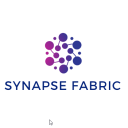Visual Studio Code vs. Visual Studio: Choosing the Right Development Environment
When it comes to software development, the choice of the right development environment can significantly impact your productivity and the quality of your code. Two popular options in the world of Microsoft development are Visual Studio Code (VS Code) and Visual Studio (VS). Both offer unique features and capabilities, catering to different needs and preferences. In this blog post, we’ll compare these two development environments, highlighting their strengths and differences, to help you make an informed decision.
Comparing Features: Visual Studio Code vs. Visual Studio
| Feature | Visual Studio Code | Visual Studio |
|---|---|---|
| Type of Tool | Code editor | Integrated development environment (IDE) |
| Language Support | Wide range including C++, Python, JavaScript, and more | Broad support for various languages and platforms |
| Extensibility | Rich marketplace for extensions and plugins | Extendable through extensions and customizable templates |
| Debugger | Built-in debugger with support for various languages | Advanced debugging capabilities with extensive tools |
| IntelliSense | Smart autocompletion and code suggestions | Enhanced code suggestions, analysis, and error checking |
| Integrated Terminal | Integrated terminal for command-line interaction | Integrated terminal with debugging capabilities |
| Version Control | Git integration and version control tools | Integrated Git support and team collaboration features |
| Project Templates | Limited project scaffolding options | Wide range of project templates for different scenarios |
| Performance | Lightweight and fast | Slightly heavier due to comprehensive feature set |
| Platform | Cross-platform (Windows, macOS, Linux) | Primarily Windows, with limited macOS support |
| Cost | Free and open-source | Multiple editions, including a free Community version |
| Community and Support | Strong community support and active development | Robust documentation and Microsoft support |
When to Choose Visual Studio Code
Visual Studio Code is an excellent choice for developers who prioritize speed, simplicity, and versatility. Its lightweight nature and vast extension library make it ideal for various programming languages and development tasks. Developers who prefer to work with multiple tools, such as terminal and version control, within a single environment will appreciate VS Code’s integrated approach.
Choose Visual Studio Code if:
- You work on multiple programming languages.
- You want a faster, lightweight development environment.
- You rely on extensions for tailored functionality.
- You prefer a more minimalistic coding environment.
When to Choose Visual Studio
Visual Studio, on the other hand, is a comprehensive integrated development environment (IDE) that offers advanced features, making it suitable for large-scale projects and enterprise-level development. Its robust debugging capabilities, extensive project templates, and deeper integration with Microsoft technologies make it an attractive choice for Windows-centric development.
Choose Visual Studio if:
- You primarily work with Microsoft technologies (C#, .NET, etc.).
- You require advanced debugging tools and performance profiling.
- You’re working on complex, enterprise-level projects.
- You prefer an all-in-one solution for development, debugging, and testing.
https://synapsefabric.com/2023/08/21/navigating-infrastructure-flux-vs-helm-for-kubernetes-deployment/
Conclusion
The choice between Visual Studio Code and Visual Studio depends on your development needs and preferences. Visual Studio Code is the go-to choice for developers who prioritize speed, simplicity, and a wide range of language support, while Visual Studio offers an all-encompassing environment for Microsoft-centric development with advanced features and extensive tools. Whichever you choose, both tools provide powerful support to help you craft high-quality code efficiently.
Remember that your choice isn’t permanent. As your projects and preferences evolve, you can always switch between these two options or even combine them based on the specific tasks you’re working on. The key is to select the one that aligns best with your current project and coding style.
Happy coding!
References:





